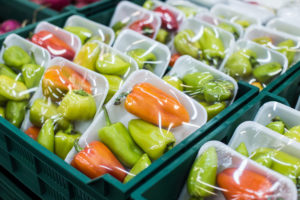This blog post was co-authored with Willa Childress with the Pesticide Action Network North America, an organizational partner of the SiX Agriculture & Food Systems Program.
————-
Nothing illustrates the need for more urgent and comprehensive chemical regulation than a dangerous group of chemicals known as PFAS. An acronym short for per- and polyfluoroalkyl substances, the list of health harms associated with exposure to this widely-used chemical is significant. Mounting research shows links between PFAS exposure and multiple cancers, reproductive damage, endocrine disruption, and impaired fetal development, just to name a few.
What’s more, PFAS—which are found in everything from drinking water to firefighting foam to food containers— are known as “forever chemicals” meaning they take thousands of years to break down in the environment. For farmer’s with soil contaminated by PFAS, there are few solutions. Remediation is expensive, time consuming, and challenging and there is little in the way of policy, programs or grants to support farmers that find themselves with unusable PFAS contaminated land.
The extreme dangers and community harm from PFAS and their predecessors have been widely known by regulators and scientists for decades but little action has been taken. Luckily, as pressure from impacted communities grows, state and federal policymakers are stepping up and moving forward critical legislation to protect people from this dangerous group of chemicals.
Federally, PFAS is currently unregulated. However the House recently heard the PFAS Action Act which would establish requirements and incentives to limit PFAS use and remediate PFAS in the environment. The Act would also direct the EPA to address PFAS contamination under the Clean Water Act and classify PFAS substances as hazardous air pollutants. Additionally, grants would be available to treat community water systems contaminated by PFAS.
However, federal regulation and state legislative efforts may be hindered by the recent announcement from the EPA that they would be re-defining the PFAS classification. This was after acknowledging their own mistake in registering pesticide products containing inert PFAS ingredients—an alarming trend noted by communities concerned about the interactions between these multiple harmful chemicals. Regardless of EPA’s intentions in moving forward this reclassification process, organizers are concerned the move will likely stall comprehensive action—because EPA first needs to review all the PFAS classes to assess if they should be included as PFAS under the new definition.

PFAS chemicals are frequently used in plastic food packaging.
Regulation at the State Level
What this EPA reclassification means for states trying to regulate PFAS is still unclear. However, state legislators, alongside community partners, are leading the way on addressing the harmful impacts of PFAS through a variety of methods.
In Maine, the legislature recently enacted two bills related to testing for PFAS contamination. One of the bills appropriated funds for PFAS testing in soil and groundwater. The other bill set maximum PFAS contaminant levels in community water systems and outlined ongoing water monitoring for contamination. The state also considered a bill that would set a maximum statute of limitations for legal proceedings 6 years after PFAS contamination.
Minnesota republicans similarly considered a bill that would have appropriated funds to create a PFAS reduction plan and increased testing. With bipartisan support, the legislature also considered a bill that would create a PFAS reduction taskforce to investigate environmental contamination. A third bill would have prohibited the use of PFAS substances in packaging produced and sold in the state.
Educating the public on the health dangers of PFAS contaminated water was an important component of a proposed Connecticut bill that would have also outlawed the use of certain firefighting foams containing PFAS substances.
Though some legislators have begun exploring ways to curb PFAS use and reduce their impacts on communities, farmers, and the environment, other agency regulators are just starting to use PFAS in their operations for activities such as pest control. It is clear that urgent action is needed. The environmental and public health harms associated with these dangerous chemicals are an imminent threat to rural communities and our food system. Alongside communities and advocates, state legislators can address these harms through progressive legislation that limits PFAS use, addresses remediation, and supports farmers who are impacted by these forever chemicals.
———–
If you are a state legislator interested in working on PFAS regulation please reach out to the SiX Agriculture & Food Systems program at [email protected]

